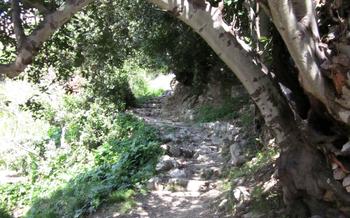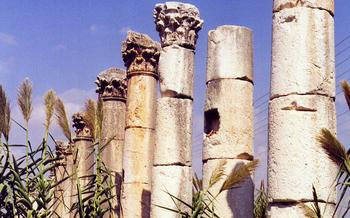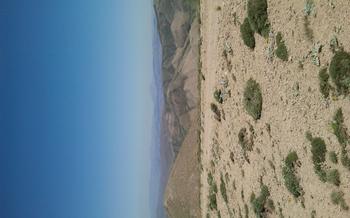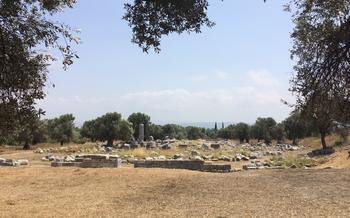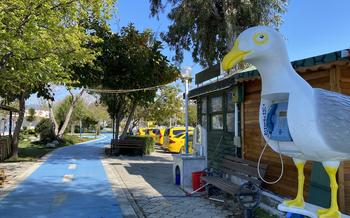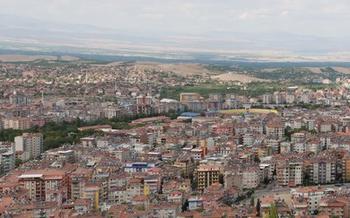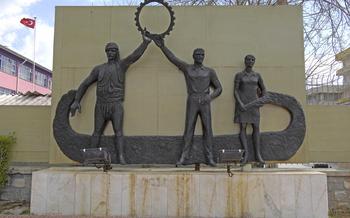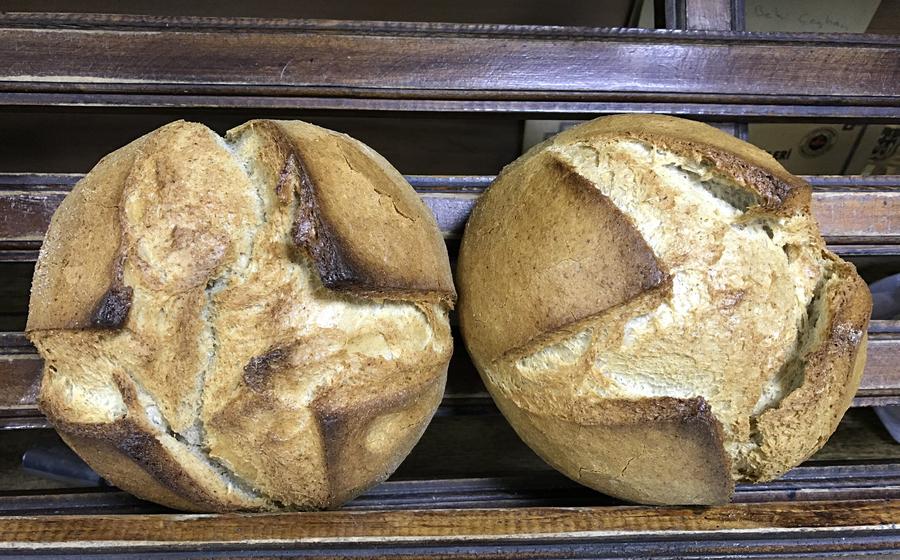
Afşar Antique City (Near Malatya)
- Afşar Antique City: A Historical Gem
- Exploring the Ruins of Afşar
- The Agora: Center of Activity
- The Odeon: A Place for Performances
- The Roman Baths: A Haven for Relaxation
- The Temple of Zeus: A Monumental Structure
- The City Walls: A Defensive Barrier
- The Necropolis: City of the Dead
- The Museum of Afşar: A Treasure Trove of Artifacts
- Festivals and Events: A Celebration of Culture
- Accommodation Options for Visitors
- Transportation to Afşar Antique City
- Guided Tours and Local Guides
- Insider Tip: Unveiling the Ancient Aqueduct
Afşar Antique City: A Historical Gem
Hidden amidst the picturesque landscapes of Malatya, Turkey, lies the ancient city of Afşar, a testament to the rich historical and cultural heritage of the region. Once a thriving settlement during the Roman and Byzantine eras, Afşar boasts a remarkable collection of well-preserved ruins and architectural wonders that transport visitors back in time.
Location and Accessibility:
Afşar Antique City is conveniently situated just 12 kilometers from the city of Malatya, making it an ideal day trip destination. The site is easily accessible by car, with well-maintained roads leading directly to the entrance. Visitors can also opt for public transportation, with regular buses departing from Malatya's city center.
Importance in Ancient Times:
In ancient times, Afşar held significant strategic and economic importance. Its location along trade routes facilitated commerce and cultural exchange between the Roman Empire and the East. The city served as a hub for merchants, artisans, and travelers, contributing to its prosperity and growth.
Architectural Significance:
Afşar Antique City showcases a blend of architectural styles, reflecting the diverse influences that shaped its history. Visitors can marvel at the impressive Roman architecture, characterized by arches, columns, and intricate carvings. Byzantine influences are evident in the city's churches and mosaics, adding a touch of elegance and grandeur to the site.
Exploring the Ruins of Afşar
The Afşar Antique City lies in ruins today, but its remnants offer a glimpse into its glorious past. As you wander through the site, you'll encounter the remains of various structures that once served different purposes. Among them, the agora, odeon, Roman baths, Temple of Zeus, city walls, and necropolis stand out as particularly significant.
The agora, the heart of ancient cities, was a bustling marketplace and gathering place. Here, you can still see the outlines of shops, colonnades, and public buildings that once lined the square. The odeon, a small theater, was used for musical performances, recitals, and other cultural events. Its well-preserved seating arrangements and impressive acoustics transport you back in time to when artists graced its stage.
The Roman baths, a testament to the Romans' engineering prowess, offer a glimpse into the ancient world's bathing culture. Explore the various chambers, including the frigidarium (cold room), tepidarium (warm room), and caldarium (hot room), and imagine the soothing atmosphere that once filled these spaces.
The Temple of Zeus, dedicated to the king of the gods, is a majestic structure that commands attention. Its imposing columns and intricate carvings speak to the religious significance it once held. Though time has taken its toll, the temple's grandeur remains palpable.
The city walls, once a formidable defense against invaders, encircle the site. Constructed using advanced techniques, these walls showcase the architectural prowess of the ancient builders. Stroll along their remnants and marvel at the strategic positioning of towers and gates that protected the city.
Finally, the necropolis, the city of the dead, lies just outside the city walls. Here, you'll find a variety of tombs, each telling a story about the lives and beliefs of those buried within. From simple graves to elaborate mausoleums, the necropolis offers a glimpse into the funerary practices of ancient Afşar.
Exploring the ruins of Afşar is a journey through time, allowing you to connect with the past and gain a deeper appreciation for the rich history that lies beneath the surface of this ancient city.
The Agora: Center of Activity
The agora, a bustling marketplace and meeting ground, played a central role in the lives of ancient Afşar residents. This vibrant hub of activity served as the city's economic, political, and social center. The agora, with its rows of shops and stalls, was a place where locals could buy and sell goods, trade stories, and conduct business. It was also a place for public gatherings, where citizens could voice their opinions and participate in the decision-making process.
The agora at Afşar is a particularly well-preserved example, offering visitors a glimpse into the daily life of this ancient city. Notable features include the colonnaded walkways, which provided shade and protection from the elements, and the central square, which was likely used for public meetings and events.
The agora at Afşar is comparable in size and scope to other agoras found in the region, such as the agora at Ephesus. However, the Afşar agora possesses a unique charm and atmosphere, largely due to its well-preserved state. It is a must-see for anyone interested in understanding the daily life of the ancient people of Afşar.
The Odeon: A Place for Performances
The odeon was a significant structure in ancient cities, serving as a venue for various performances and events. In Afşar, the odeon is a well-preserved example of this type of building. It features a semi-circular seating arrangement with tiers of stone benches, providing a comfortable viewing experience for attendees. The stage area is spacious and elevated, allowing performers to engage with the audience effectively.
The acoustics of the Afşar odeon are remarkable, ensuring that the voices of actors, musicians, and orators could be heard clearly throughout the theater. This acoustic excellence was achieved through careful design and construction techniques, such as the use of curved walls and vaulted ceilings. The seating arrangement also contributed to the optimal distribution of sound, ensuring that every spectator had a clear and immersive auditory experience.
Various types of performances were held in the odeon, including plays, musical concerts, poetry recitals, and public speaking events. These events played a vital role in the cultural and entertainment life of the ancient city. The odeon served as a gathering place for citizens to appreciate the arts, share ideas, and celebrate their cultural heritage.
The Roman Baths: A Haven for Relaxation
The Roman baths in Afşar Antique City stand as a testament to the advanced engineering and cultural significance of ancient Roman civilization. These structures were not merely places for bathing and hygiene but also served as social hubs and centers of relaxation.
The Afşar Roman baths feature a series of interconnected rooms, each with its unique purpose. Visitors could begin their bathing ritual in the frigidarium, a cold room designed to invigorate the body. They would then progress to the tepidarium, a warm room that served as a transition space, before entering the caldarium, the hottest room, where they could soak in steaming pools and enjoy the therapeutic benefits of the warm water.
The baths were adorned with intricate mosaics, frescoes, and sculptures, reflecting the artistic prowess of the Romans. The floors were often heated using a system of hypocausts, which circulated hot air beneath the building, ensuring a comfortable bathing experience even in the colder months.
Beyond their practical function, the Roman baths held deep cultural significance. They were places where people from all walks of life could come together, socialize, and engage in philosophical discussions. The baths also played an essential role in religious rituals and were often associated with healing and purification.
In comparison to other Roman baths in the region, the Afşar baths are relatively well-preserved, offering visitors a glimpse into the bathing practices and customs of ancient Roman society. Their grandeur and architectural features make them a must-see attraction for anyone interested in ancient history and culture.
The baths' significance extends beyond their historical value. They serve as a reminder of the importance of self-care and well-being, a concept that is still highly valued in modern society. Whether as a place for bathing, socializing, or simply relaxing, the Roman baths in Afşar Antique City offer a unique and immersive experience that transports visitors back in time.
The Temple of Zeus: A Monumental Structure
Zeus, the king of the gods in ancient Greek mythology, was revered and worshipped throughout the ancient world. In Afşar Antique City, the Temple of Zeus stands as a testament to the city's significance and religious devotion. This monumental structure, dedicated to the almighty deity, is a masterpiece of ancient architecture and engineering.
Built in the 2nd century AD, the temple showcases exquisite craftsmanship and intricate details. Its imposing façade features a grand entrance flanked by towering columns, each adorned with intricate carvings that depict scenes from Greek mythology. The interior of the temple is equally impressive, with a spacious cella that once housed a colossal statue of Zeus, now lost to the sands of time.
The Temple of Zeus held great religious significance for the people of Afşar. It was a place where they gathered to pray, make offerings, and seek guidance from the mighty god. The temple also served as a venue for important religious ceremonies and festivals, drawing worshippers from far and wide.
The architecture of the Temple of Zeus reflects the Hellenistic influences that permeated the region during the Roman period. Its design and construction techniques showcase the blending of Greek and Roman architectural styles, creating a unique and harmonious structure. The temple's similarities to other temples dedicated to Zeus, such as the Temple of Zeus at Olympia, further highlight its importance and the widespread worship of the god throughout the ancient world.
The City Walls: A Defensive Barrier
The city walls of Afşar served as a vital defensive structure in ancient times. Constructed to protect the city from external threats and invasions, these walls showcased remarkable engineering and architectural prowess. Built using sturdy stone blocks, the walls encircled the entire city, forming an imposing barrier that stood as a testament to the city's strength and resilience.
The walls featured strategically placed towers and gateways that allowed for surveillance and controlled access to the city. The towers provided vantage points for guards to keep watch for approaching enemies, while the gateways were fortified with heavy gates and intricate locking mechanisms to prevent unauthorized entry. The walls also incorporated sloping sections that deflected projectiles, making them even more formidable against attackers.
The construction of the city walls involved meticulous planning and skilled craftsmanship. The massive stone blocks were carefully quarried, shaped, and fitted together without the use of mortar. The walls' thickness and height offered significant protection against siege weapons and invading armies, making Afşar a formidable stronghold.
The Necropolis: City of the Dead
The ancient city of Afşar also boasts an extensive necropolis, or City of the Dead, located just outside the city walls. This vast complex of tombs and burial chambers offers a glimpse into the funerary practices and beliefs of the ancient inhabitants of Afşar.
The necropolis consists of various types of tombs, including rock-cut tombs, chamber tombs, and tumuli. Each tomb is unique in its design and construction, reflecting the social status and wealth of the deceased. Some tombs feature intricate carvings, inscriptions, and frescoes depicting scenes from mythology and daily life.
Archaeological excavations in the necropolis have unearthed a wealth of artifacts, including jewelry, pottery, coins, and personal belongings, shedding light on the cultural and religious practices of the Afşar people. These discoveries have provided valuable insights into the lives and beliefs of the ancient inhabitants of this region.
Exploring the necropolis is an evocative experience, allowing visitors to connect with the past and gain a deeper understanding of the rich history and traditions of Afşar. It is a place where the living and the dead seem to coexist, creating a sense of awe and contemplation.
The Museum of Afşar: A Treasure Trove of Artifacts
Nestled in the heart of Malatya, the Museum of Afşar stands as a testament to the rich history and cultural heritage of the region. Established with the primary goal of preserving and showcasing artifacts unearthed from the ancient city of Afşar, this museum is a treasure trove of archaeological wonders that provide a glimpse into the lives and traditions of civilizations past.
The museum's collection is diverse and captivating, featuring a vast array of artifacts that span different historical periods. From intricate pottery and jewelry to bronze sculptures and stone inscriptions, each artifact tells a unique story about the people who once inhabited this land. Visitors can admire the exquisite craftsmanship and artistic prowess of the ancient artisans, gaining insights into their daily lives and beliefs.
Among the highlights of the museum's collection are several well-preserved statues depicting various deities and mythological figures. These statues offer a glimpse into the religious practices and beliefs of the ancient inhabitants of Afşar, providing valuable insights into their spiritual world. Other notable artifacts include a collection of coins, tools, and household items that shed light on the economic activities and daily life of the city's residents.
The Museum of Afşar is not just a repository of artifacts; it is a place where history comes alive. Through its exhibits and educational displays, the museum aims to educate and inspire visitors, fostering a deeper appreciation for the region's rich cultural heritage. With its fascinating collection and informative displays, the Museum of Afşar is a must-visit destination for anyone interested in exploring the ancient world of Turkey.
Festivals and Events: A Celebration of Culture
Malatya is renowned for its vibrant cultural scene, and the city hosts several festivals and events throughout the year, many of which are directly related to Afşar Antique City. These events provide an excellent opportunity for visitors to immerse themselves in the rich history and traditions of the region.
One of the most prominent festivals is the Afşar Antique City Festival, held annually in the summer. This festival showcases the city's cultural heritage through traditional music, dance, and theater performances, as well as exhibitions of local crafts and products. Visitors can also participate in guided tours of the ancient ruins, led by knowledgeable experts who bring the city's history to life.
Another notable event is the Malatya Apricot Festival, held in July to celebrate the city's famous apricot production. This festival features apricot-themed activities, such as cooking competitions, apricot-based product exhibitions, and apricot-themed cultural performances. Visitors can indulge in a variety of delicious apricot-based dishes and products, while also learning about the region's agricultural heritage.
For those interested in a more spiritual experience, the Malatya Pilgrimage Festival, held in September, offers a chance to visit the sacred sites and shrines in the region. This festival attracts pilgrims from all over the country who come to pay homage to the region's religious figures and seek blessings. Visitors can participate in religious ceremonies, listen to spiritual discourses, and immerse themselves in the profound spirituality of the region.
Accommodation Options for Visitors
Afşar Antique City is located near the city of Malatya, offering a range of accommodation options for visitors to choose from. Whether you prefer the comfort of a modern hotel or the charm of a local guesthouse, there are options to suit all budgets and preferences.
For those seeking a luxurious stay, the *Malatya Park Hotel* offers elegant rooms and suites with stunning views of the city. Amenities include a spa, fitness center, and rooftop terrace.
For a more budget-friendly option, the *Asilhan Hotel* provides comfortable rooms with basic amenities. It is conveniently located within walking distance of the city center and offers a complimentary breakfast.
If you prefer a more local experience, several guesthouses in Malatya offer a warm and welcoming atmosphere. The *Malatya Guesthouse* is a popular choice, known for its friendly staff and delicious home-cooked meals.
No matter your choice of accommodation, Malatya offers a range of options to ensure a comfortable and enjoyable stay while exploring the wonders of Afşar Antique City.
Transportation to Afşar Antique City
Reaching Afşar Antique City from Malatya is a straightforward journey. Public transportation options are readily available, with buses and minibuses departing from Malatya Bus Terminal at regular intervals. The bus trip takes approximately 45 minutes and offers a scenic ride through the picturesque countryside. Alternatively, taxis and private transportation services are also available for those seeking a more convenient and personalized travel experience. These options provide flexibility and allow you to set your own pace for exploring the ancient city. Whether you choose public transportation or a private vehicle, the journey to Afşar promises to be an enjoyable and memorable part of your visit.
Guided Tours and Local Guides
Exploring Afşar Antique City with a knowledgeable guide can greatly enhance your experience. Guided tours typically cover the main attractions, providing historical and cultural context that brings the ruins to life. Reputable tour operators in Malatya offer a range of guided tours, catering to different interests and budgets. Tours typically last between two and four hours, and prices vary depending on the group size and the level of customization.
When choosing a guided tour, it's advisable to do some research and read reviews to find a reputable operator. Look for companies that have experienced and licensed guides who are passionate about sharing the history and culture of the region.
Local guides can provide valuable insights and anecdotes, helping you to connect with the past in a meaningful way. They can also point out hidden gems and lesser-known areas of the site that you might otherwise miss.
Whether you're a history buff, an architecture enthusiast, or simply someone who enjoys exploring ancient ruins, a guided tour of Afşar Antique City is a worthwhile investment. It's an opportunity to learn more about this fascinating site and gain a deeper appreciation for its historical significance.
Insider Tip: Unveiling the Ancient Aqueduct
Beyond the well-known ruins of Afşar Antique City, there lies a hidden gem that often goes unnoticed by visitors. Nestled amidst the rolling hills surrounding the site is an ancient aqueduct, a testament to the ingenuity and engineering prowess of the past.
To reach this hidden treasure, follow the path leading away from the main ruins towards the west. As you venture further, you'll catch glimpses of the aqueduct emerging from the landscape, its stone arches gracefully spanning a ravine.
The aqueduct, believed to date back to the Roman period, once served as a vital water supply for Afşar and its inhabitants. Its intricate construction, featuring multiple tiers of arches, allowed water to be transported over long distances and distributed throughout the city.
While the aqueduct has withstood the test of time, it remains a relatively unknown attraction, offering visitors a unique opportunity to explore a lesser-known aspect of Afşar's history. Capture the grandeur of this ancient marvel in your photographs and immerse yourself in the stories it holds.
Whether you're a history buff, an architecture enthusiast, or simply seeking off-the-beaten-path experiences, the ancient aqueduct is a hidden gem that will leave you in awe. So, venture beyond the main ruins and discover this remarkable relic of the past.
